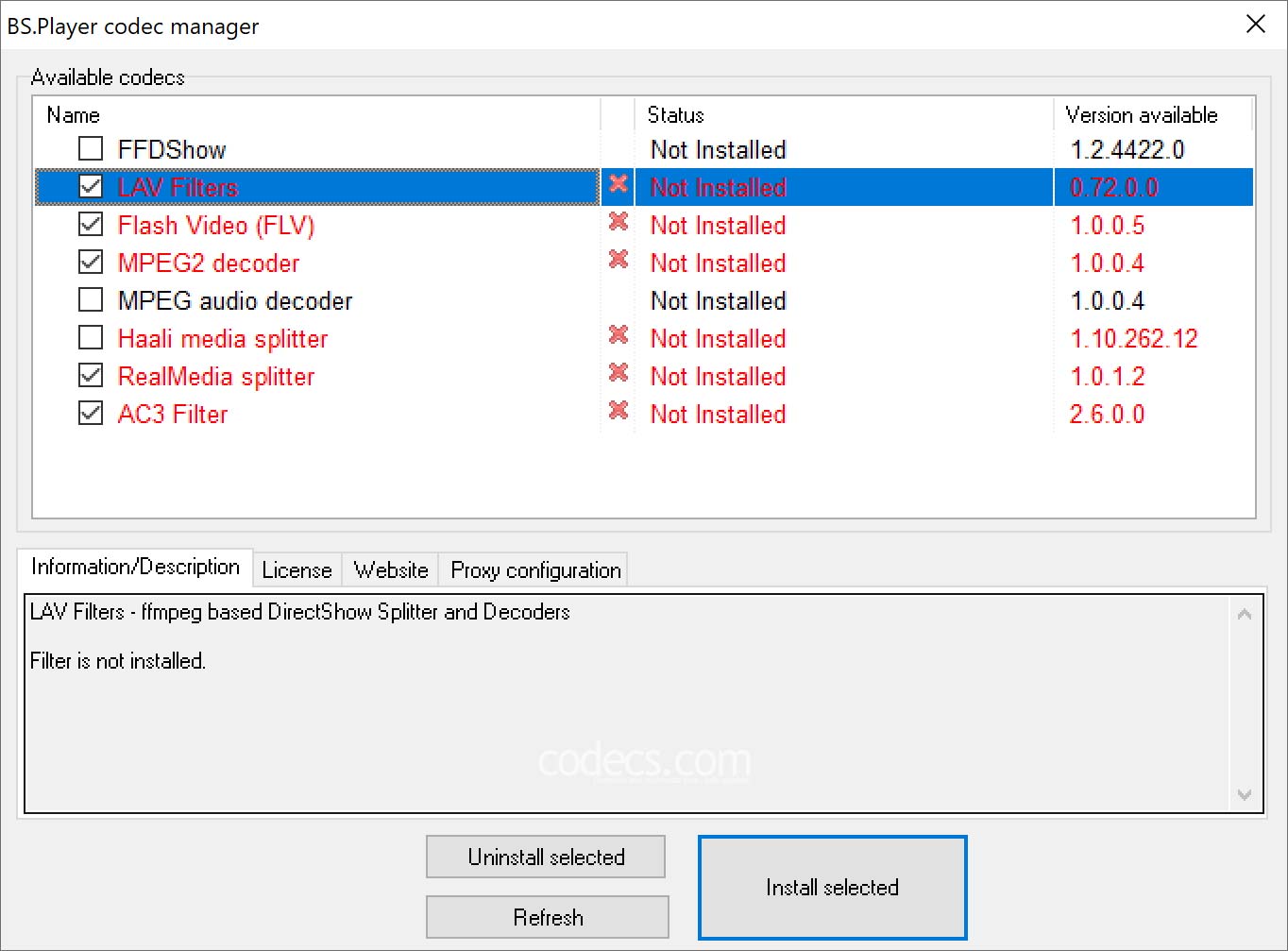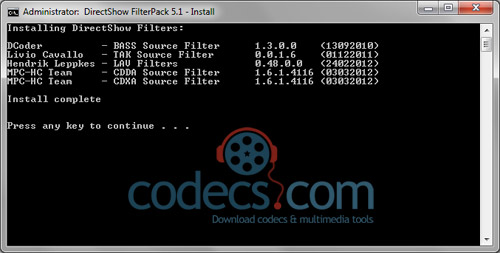
- #Ffmpeg directshow install how to
- #Ffmpeg directshow install install
- #Ffmpeg directshow install drivers
- #Ffmpeg directshow install Patch
- #Ffmpeg directshow install full
However, this does expose the guts of a working DS filter - it could be easily modified to handle other underlying codecs. This is by design for patent liability reasons. Only the H264 codec from ffmpeg is exposed, and only the decoder is enabled. This filter wraps the libavcodec portion of the FFMpeg project.
#Ffmpeg directshow install drivers
It only registers for the "H264" FourCC, and the drivers are installed with "normal" priority, so it should coexist with other codecs peacefully. HAX264 is a DirectShow Video Transform Filter for decoding H264(AVC) video. Let's start again with installation of Visual Studio Community and git and downloading and installation of msys and yasm as described in FFmpeg compilation guide.Hax264 - Open Source DirectShow Decoding for H264(AVC) Video After that we'll just replace avdevice.dll in the original build with avdevice.dll we just created.
#Ffmpeg directshow install Patch
Then we'll checkout FFmpeg source code that matches the downloaded version, we'll apply NDI patch and create custom build again with shared libs. In this case we'll download some Windows build with shared libraries. We also might like the idea that we'll avoid downloading of Intel® Media SDK and building the Opus library. Also we most likely aren't going to deploy StreamBalls to PC with 4th Generation Intel Core Processor, so we don't need to patch QSV code at all. The ffmpeg binary we just created fits all needs of StreamBalls application, however it lacks many codecs compared to other prebuilt ffmpeg binaries, that we might want to use for different purposes.
#Ffmpeg directshow install full
Use -h to get full help or, even better, run 'man ffmpeg'ĭE libndi_newtek Network Device Interface (NDI) output using NewTek library Start msys from here by typing followingįfmpeg version N-103132-g65fdc0e589 Copyright (c) 2000-2021 the FFmpeg developersīuilt with Microsoft (R) C/C++ Optimizing Compiler Version 7.1 for 圆4Ĭonfiguration: -toolchain=msvc -enable-static -disable-shared -disable-bzlib -disable-zlib -enable-nonfree -enable-libopus -enable-libndi_newtek -enable-libmfx -enable-encoder=h264_qsv -enable-decoder=h264_qsv -enable-gpl -extra-cflags='-I/d/stream/ffmpeg/NDI_SDK/Include/ -I/d/stream/ffmpeg/intel_mfx_SDK_2021_R1/include/ -I/d/stream/ffmpeg/libopus/opus-1.3.1/include/' -prefix=/d/programs/ffmpeg/custom-build Now start the '圆4 Native Tools Command Prompt', that should be somewhere in start -> Visual Studio XXX. As a result the content of some c99 directory should look like this:
#Ffmpeg directshow install install
Download and install msys and yasm as described in FFmpeg compilation guide and don't forget to rename the yasm executable to yasm.exe. Let's assume we want to build 64-bit version. Building patched versionįirst of all download and install Visual Studio Community and git. Please be advised that building stuff in Windows is nothing but pain and it requires a lot of patience.

#Ffmpeg directshow install how to
In the following section I shall try to describe way how to build FFmpeg with NDI IO support and needed codecs (Opus and Intel QSV) under Windows. The symptom is that h264_qsv encoder in FFmpeg fails with following error:Įrror initializing the encoder: invalid video parameters (-15)įor this reason we'll apply another patch to disable QVBR in h264_qsv encoder, which is a feature we won't use anyway.


This bug was once fixed in v3.3, but unfortunately it has been introduced again in v4.2. There is one more issue with FFmpeg and QSV on PCs with 4th Generation Intel Core Processor. NDI support was once implemented for FFmpeg v3.4.ĭue to some licensing issues it had to be reverted again in v4.2.įrom the revert commit we can easily create patch, that shall add NDI support to FFmpeg once again. Now the question is how to encode NDI stream and pass it via RTP to mediasoup.įor this purpose we'll use FFmpeg, but we'll have to compile it with NDI I/O support first. Then there has to be some media server, that supports WebRTC transport, and since StreamBalls is written in javascript the only choice is mediasoup. Might also do the trick, but probably we'll have to wait until OBS virtual cam shall carry sound. Maybe some combination of DirectShow output (with OBS virtual camera) and virtual cables This is lossless output, that is not delayed by streaming or recording encoder, so the latency is ultra-low and no CPU is wasted. In OBS again the only option seems to be NDI output (via obs-ndi plugin). In browser the only option is to use WebRTC. There are many options how to display OBS output in web browser, however when it is required to be low latency then the number of options becomes rather limited.


 0 kommentar(er)
0 kommentar(er)
